ராதே கிருஷ்ணா 24-07-2012
Page 1 of 1
Sage Valmiki's 'Ramayana' is the very first such poem in Sanskrit. Therefore, it is also called the 'Adi-Kavya' or - the First Poem; Sage Valmiki is also known as the 'Adi-Kavi’, which means the First Poet.
The poet, who composed 'Ramayana' and taught the song and story to Lava and Kusha, was a great sage by name Sage Valmiki. How this man became a sage and a singer-poet is itself a very interesting story. Sage Valmiki's Ramayana is in the Sanskrit language. It is a very beautiful poem.
Sage Valmiki's 'Ramayana' can be sung. It is delightful to the ear like the sound of the cuckoo. Sage Valmiki has been described as a cuckoo on the tree of poetry, singing sweetly. Those who read the 'Ramayana' bow to the great Sage Valmiki first and then turn to the epic.
Sage Valmiki also lived in the age of Sri Rama - called the 'Treta Yuga'. In those days, there was a thick forest all along the banks of the river Ganga. Many sages built their hermitage in that forest for their 'tapas'; among them was a sage by the name of Prachetasa. He had, a son called Ratnakara. When he was very young boy, one day he went into the forest. While playing he lost his way and began to cry. Just then a hunter came there looking for a prey. He saw the chubby boy and fondled and pacified him. The hunter had no children. He took the boy to his hut in the midst of the jungle.
Ratnakara's father searched for his son all around the hermitage, but could not find him. Finally he and his wife thought that the boy had become the prey of some wild beast. Both wept very much.
The hunter and his wife brought up the lad with great love. Ratnakara forgot his parents. He took the hunter for his father and the hunter's wife for his mother. He was taught how to hunt by the father. Ratnakara was a clever boy and learnt it quickly. He became a hunter with a sure aim.
To the birds and beasts of the forest, he became verily Yama, the God of Death. When he came of age, his foster father searched for a bride and celebrated his marriage with a beautiful girl from a hunter’s family. In a few years she gave birth to some children. Thus Ratnakara's family grew in size. It became very difficult for him to provide food and clothing to his large family. So he took to robbery. He began to attack people going from one village to another, frighten them and to away all that they had. If they opposed him, he killed them.
But Narada was not an ordinary man. He was a divine sage. He was not frightened by the loud shouts of Ratnakara. He smilingly, "My dear man, all that I have only this old Veena and the rags I wear; If you want them, you can certainly take them. Why should you break my head for these?"
Ratnakara was astonished at these words. He looked up at Narada's face. There was neither fear nor anger; there was only peace. And how bright was that face! He was surprised to see a face tender and innocent like that of a child. He had never seen such a lovely face. As he gazed, his cruel mind melted into tenderness.
Narada sat beneath a tree and as played on the Veena, sang a song in praise of God. It was sweet like the song of cuckoo. Ratnakara was deeply moved. Noticing the change, the sage Narada paused in his song and said, "Brother, stealing is a sin. Killing animals is also sinful. Why do you do such evil?"
"Sire, what can I do Ratnakara replied, I have a large family. There are my old parents and my wife and children; they partake of my happiness and my troubles. I have to provide them with food and clothing. Hunting and stealing are all I know. What else can I do?"
The sage smiled and said, "My friend, will any member of your family partake of your sin also? Go and ask them, and bring back their reply."
Ratnakara thought that Narada was trying a trick to make his escape. Narada understood it and again said, "Well, child, if you do not trust me, you can tie me to this tree and then go."
Ratnakara thought that was all right. He tied Narada to a tree and went home.
On reaching home, he first went to his father and said, "Father, I rob people to get food and clothing for you all. It seems that is a sin. Do you not share in that sin? "His father was angry and said, "You sinner, you should not do such bad things. Am I to share your sins? No, never. You have to suffer for what you do."
Ratnakara went to his mother and said, "Surely, mother, you will share my sin, won't you?" But she also scolded him and sent him away. He then went to his wife and said, "Do you know how I earn to provide you and your children with food and clothing? It is by robbery. But I steal for your sake. Therefore you are also partners in my sin. Isn't that so?" The wife was displeased and said, 'What are you saying? What have we to do with your sin? You are my husband, and my children are your children. It is your duty to look after us and give us food and clothing."
Ratnakara's eyes were opened. He realized that he alone was responsible for all his sins no one else would share his sin. As soon as it was clear to him, he ran to Narada. He untied the sage and amidst weeping, narrated to him all that had happened in his home. Falling at Narada's feet he asked the sage, "Oh, sire now what of me? How can I atone for all the sins I have committed? You are my only savoir."
Narada lifted him up and wiped his tears. He consoled him saying, "Do not be afraid. I shall teach you a way to wash off your sins." So he taught Ratnakara the sacred name of Rama - 'Rama Nam'. He made him sit beneath a tree and asked him to go on repeating the sacred name of Rama. He said, I shall come here again, Till then you should not get up and go away." Then the sage departed.
At last one day the sage Narada again came that way. Very carefully he cleared that anthill still Ratnakara was wholly lost in his 'tapas' and did not wake up to the world around him. Narada chanted the name of Rama in his ears. Then he opened his eyes and saw the sage standing before him. He saluted him from where he was sitting. Narada helped him to get up. He also gently touched him all over. Ratnakara felt new life flowing through him. He touched the sage's feet; Narada lifted him up and embraced him. He said to him, "Ratnakara, you are blessed. God is pleased with your 'tapas'. You are now a sage of the highest order, a Brahmarshi. As you are now reborn from a Valmika (the ant-hill), will hereafter be famous as Sage Valmiki."
Sage Valmiki was looking for a suitable place to step into the stream, when he heard the sweet chirping of birds. Looking up he saw two birds flying together. Sage Valmiki felt very pleased on seeing the happy bird couple.
Just then one of the birds fell down hit by an arrow. It was the male bird. Seeing the wounded one, its mate was screaming in agony. Sage Valmiki's heart melted at this pitiful sight. He looked around to find out who had shot the bird. He saw a hunter with a bow and arrows, nearby. The hunter had shot the bird for food. Sage Valmiki was very angry. His lips opened and words came out: "You, who have killed one of a happy couple, may you not yourself live long!" A shloka was born out of his sorrow.
The sad plight of the birds had moved Sage Valmiki to curse the hunter, but yet he felt very unhappy, because he had cursed him. He expressed his sorrow to Bharadwaja who was with him. He was equally surprised that a shloka should have come from his lips. As he walked back to his ashram and also later, he thought only of the shloka.
While Sage Valmiki's mind dwelt so intensely on the shloka that had sprung from his lips, Brahma, the Lord of Creation, appeared before him. He said to Sage Valmiki, "O great sage, the shloka which came from your lips was inspired by me. Now you will write the 'Ramayana' in the form of Shlokas. Narada has narrated to you the story of the 'Ramayana'. You will see with your own eyes all that happened. Whatever you say will be true. Your words shall be truth. As long as there are rivers and mountains in the world, people will read the 'Ramayana'." So Lord Brahma blessed him and disappeared.
Sage Valmiki wrote the 'Ramayana'. He taught the Shlokas first to the sons of Sri Rama, Lava and Kusha. They were born twins in Sage Valmiki's ashram and grew up there.
Bhagwan Parshuram, the sixth Incarnation of Vishnu, belongs to the Tretayug, and is the son of Jamadagni and Renuka. Parshu means axe, hence His name literally means Ram-with-the-axe. He received an axe after undertaking a terrible penance to please Lord Shiva, from whom He learned the methods of warfare and other skills. Even though He was born as a Brahmin, He had Kshatriya (warrior) traits in terms of aggression, warfare and valour. Hence He is said to be a 'Brahma-Kshatriya' and one who possesses Brahmatej and Kshatratej.
Great Sages
Page 1 of 1
 Mahakavi Kalidas : Greatest Scholar and Poet in Sanskrit Mahakavi Kalidas : Greatest Scholar and Poet in Sanskrit
Kalidas is one of the greatest poets and dramatists in Sanskrit. His chronicle of the kings of the Raghu clan ('Raghuvamsha'), the great play 'Shakuntala' and other works depict, through many great characters, the highest ideals of life as seen by the ancientpeople of Bharat.
|
| Maharishi Valmiki: Composer of Great Epic Ramayana
Sage Valmiki is a great example of how people are uplifted by the company of good men. By coming into contact with Narada, he became a great sage, a Brahmarshi; and he also gave the 'Ramayana' which the world can never forget.
|
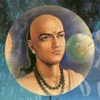 Great Indian Hindu Sages who revolutionised the field of Science Great Indian Hindu Sages who revolutionised the field of Science
Our illustrious past in the field of Science before the invasions of Islamic & Portuguese hordes is worth noting. This should give inspiration to our young generation who will then realise what great scientists were produced in the golden era of India.
|
 Lord Parshuram Lord Parshuram
Parshuram who is well-versed with the four Vedas and sports the bow and arrow upon His back (that is the one who has the radiance of both the Brahman and the Kshatriya) will destroy evildoers either with a curse or with an arrow.
|
Mahakavi Kalidas : Greatest Scholar and Poet in Sanskrit
Ashadh Shukla Pratipada, Kaliyug Varsha 5113
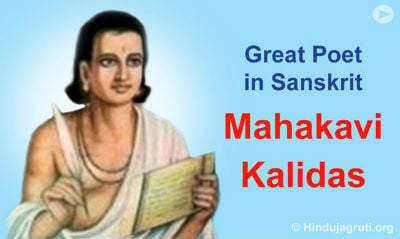 Mahakavi Kalidas |
Content
- Introduction
- Kalidas
- A Great Scholar and Poet
- The Great works by Kalidas
- Summary of the life and work of Kalidas
Introduction
One of the greatest poets and dramatists in Sanskrit. His chronicle of the kings of the Raghu clan ('Raghuvamsha'), the great play 'Shakuntala' and other works depict, through many great characters, the highest ideals of life as seen by the ancient people of Bharat.
It needs the genius of poets who create literary epics and great thinkers for a language to achieve world-renown. Sanskrit is eminently lucky in this respect. Sages' celebration of the wonders of nature, the sky, the stars, mountains and rivers, the sun, the moon, the clouds, fire ('Agni') and their devout offering of prayers to the Universal Power are all found in the Vedic classics which/are in Sanskrit. Puranas and historical epics like the Ramayana and the Mahabharat vividly describe the battle between the good and the evil. They also portray the virtues like devotion to truth, a sense of sacrifice, heroism, cultured living, etc. In Sanskrit there are also beautiful stories of birds and animals like Panchatantra; stories extolling good and basic qualities of wisdom and intelligence. Sanskrit can also justly boast of a rich treasure house of plays, poems and many scientific and philosophical treatises.
A poet who has made a distinct and glorious contribution to this sumptuous Sanskrit literature is Kalidas. He has pictured in his works the beauty in life and pondered upon how we can give pleasure to others by generous and graceful behavior. His portrayals are vivid and heart- warming; his word power is unique. In a few words he is capable of bringing out the entire meaning intended. His writings touchingly show up a noble, meaningful mode of life for the people to pursue. His works are an intellectual treat to thinkers and common readers alike.
According to one such popular legend, Kalidas wasn't always so wise and learned. In fact, there was a time he was considered to be one of the stupidest people in the kingdom!
One sunny day, Kalidas was sitting on a branch of a tree, trying to saw it off. But the dimwitted man was sitting on the wrong end of the branch, so when he finally sawed through the branch, down he tumbled! This act of sheer stupidity was observed by some shrewd pundits minister passing by.
Now these pundits wanted to play a trick on the arrogant princess, to teach her a lesson. She was determined to marry someone who would defeat her in a debate about the scriptures. The princess had heaped considerable abuse on them over a period of time, and they were determined to extract their revenge. So, when they chanced upon Kalidas, they decided to present him to the queen as a suitable match for her.
In order to conceal his stupidity, the pundits asked Kalidas to pretend that he was a great sage, who was observing a vow of silence. Kalidas readily agreed, and they presented him to the queen, saying that Kalidas would only communicate by way of gestures. When the queen asked Kalidas a few questions to test his intelligence, Kalidas gesticulated wildly and the astute pundits 'interpreted' these gestures as extremely witty answers and retorts. The princess was suitably impressed, and the couple was married without much delay.
Kalidas's stupidity could be concealed for only so long, and the night of the wedding Kalidas blurted out something inane. The princess realized that she had married a prize fool. Furious, she threw him out of her palace, and her life.
The dejected Kalidas wandered around, till he came to the bank of the river. He contemplated taking his life when he suddenly saw some women washing clothes on the edge of the river bank. He observed that the stones which the women were pounding with clothes, were smooth and rounded, while the other stones were rough and ragged. This observation hit him like a thunderbolt, and it dawned upon him that if stones could be worn through and change their shape by being pounded upon by clothes, then why couldn't his thick brains change, by being pounded upon by knowledge!
Kalidas thus grew determined to become the wisest and most learned man in the country, and to achieve this end he started indulging in intellectual pastimes, reading, meditating and praying to his goddess Kali to grant him divine knowledge. His wish was fulfilled.
This is one of the most popular legends about Kalidas. There are several other stories but they lack authenticity.
It appears Kalidas was at the court of emperor Vikramaditya. The place and time of this king are also not definite. But it can be said with some certainty that Kalidas lived before the 6th century A.D., i.e., about 1400 years ago. But when exactly he lived before the 6th century is not firmly established. Though a deep affection for the city of Ujjain is discernible in his works, it cannot be said with certainty that he lived there. But we can assume that, wherever he may have been born, he had lived at Ujjain.
Kalidas, however, had good knowledge of the whole of Bharat. In his poem 'Meghaduta', his descriptions of mountains and rivers and cities and villages stretching from Ramagiri in Central India up to Alakanagari in the Himalayas are very beautiful. In another epic poem 'Raghuvamsha', Kalidas, while portraying the conquests of emperor Raghu, describes the places and peoples, their modes of living, food-habits and trades and professions, rivers and mountains in almost the whole country -- Assam, Bengal and Utkal in the East; Pandya and Kerala in the South and Sind, Gandhara and other places in the North-west.
Reading these pen-pictures, one cannot help but conclude that the poet must have had a personal knowledge of these areas. In short, he must have traveled widely across the length and breadth of the land, seen those places, talked to the people and studied their modes of living.
Kalidas possessed that distinct intellect which makes one a great poet. He was a scholar and his works display his poetic genius as well as scholarship. Also they are marked by a belief of what is good in life and people's noble goals of life. He could describe the rich and wealthy life of a royal palace and the serene, simple and peaceful life at a hermitage with equal understanding. He could, likewise, describe the joys of the marital life of a man and his spouse as well as their pangs of separation. He creates scenes of a serious and thoughtful nature as also hilarious scenes of light comedy. In his works is found an excellent combination of art-consciousness, unmatched wordpower and an unparalleled capacity for vivid portrayals.
Kalidas's poem gives us a vivid picture of what a good, meaningful life a man could and should lead as propounded by our learned ancestors.
'Raghuvamsha' depicts our ancient, historical culture and tradition. Our ancestors had discussed in detail about such matters as to who could be a good ruler, who is a man of 'tapas' (penance), how one should lead a good, purposeful life and the like. The poet has portrayed diverse characters like Vashishta, Dileepa, Raghu, Aja and others. Agnivarna is an example of a king who could be termed as 'depraved'.
Kalidas
There are hundreds of languages in the world. However, great and classical literature which people in all countries need to read is found only in a few languages. One such great language is Sanskrit. It is one of the oldest languages. It is the mother of several Indianlanguages such as Hindi, Bengali and Marathi in the North. Kannada, Telugu and other languages in the South have also been nourished by it.It needs the genius of poets who create literary epics and great thinkers for a language to achieve world-renown. Sanskrit is eminently lucky in this respect. Sages' celebration of the wonders of nature, the sky, the stars, mountains and rivers, the sun, the moon, the clouds, fire ('Agni') and their devout offering of prayers to the Universal Power are all found in the Vedic classics which/are in Sanskrit. Puranas and historical epics like the Ramayana and the Mahabharat vividly describe the battle between the good and the evil. They also portray the virtues like devotion to truth, a sense of sacrifice, heroism, cultured living, etc. In Sanskrit there are also beautiful stories of birds and animals like Panchatantra; stories extolling good and basic qualities of wisdom and intelligence. Sanskrit can also justly boast of a rich treasure house of plays, poems and many scientific and philosophical treatises.
A poet who has made a distinct and glorious contribution to this sumptuous Sanskrit literature is Kalidas. He has pictured in his works the beauty in life and pondered upon how we can give pleasure to others by generous and graceful behavior. His portrayals are vivid and heart- warming; his word power is unique. In a few words he is capable of bringing out the entire meaning intended. His writings touchingly show up a noble, meaningful mode of life for the people to pursue. His works are an intellectual treat to thinkers and common readers alike.
A Great Scholar and Poet
Who is this Kalidas ? When did he live and where in India was he residing? Much discussion has taken place for a long time now about his life and times. Not many queries on this score have elicited definite answers. Several legends have sprouted around him.According to one such popular legend, Kalidas wasn't always so wise and learned. In fact, there was a time he was considered to be one of the stupidest people in the kingdom!
One sunny day, Kalidas was sitting on a branch of a tree, trying to saw it off. But the dimwitted man was sitting on the wrong end of the branch, so when he finally sawed through the branch, down he tumbled! This act of sheer stupidity was observed by some shrewd pundits minister passing by.
Now these pundits wanted to play a trick on the arrogant princess, to teach her a lesson. She was determined to marry someone who would defeat her in a debate about the scriptures. The princess had heaped considerable abuse on them over a period of time, and they were determined to extract their revenge. So, when they chanced upon Kalidas, they decided to present him to the queen as a suitable match for her.
In order to conceal his stupidity, the pundits asked Kalidas to pretend that he was a great sage, who was observing a vow of silence. Kalidas readily agreed, and they presented him to the queen, saying that Kalidas would only communicate by way of gestures. When the queen asked Kalidas a few questions to test his intelligence, Kalidas gesticulated wildly and the astute pundits 'interpreted' these gestures as extremely witty answers and retorts. The princess was suitably impressed, and the couple was married without much delay.
Kalidas's stupidity could be concealed for only so long, and the night of the wedding Kalidas blurted out something inane. The princess realized that she had married a prize fool. Furious, she threw him out of her palace, and her life.
The dejected Kalidas wandered around, till he came to the bank of the river. He contemplated taking his life when he suddenly saw some women washing clothes on the edge of the river bank. He observed that the stones which the women were pounding with clothes, were smooth and rounded, while the other stones were rough and ragged. This observation hit him like a thunderbolt, and it dawned upon him that if stones could be worn through and change their shape by being pounded upon by clothes, then why couldn't his thick brains change, by being pounded upon by knowledge!
Kalidas thus grew determined to become the wisest and most learned man in the country, and to achieve this end he started indulging in intellectual pastimes, reading, meditating and praying to his goddess Kali to grant him divine knowledge. His wish was fulfilled.
This is one of the most popular legends about Kalidas. There are several other stories but they lack authenticity.
It appears Kalidas was at the court of emperor Vikramaditya. The place and time of this king are also not definite. But it can be said with some certainty that Kalidas lived before the 6th century A.D., i.e., about 1400 years ago. But when exactly he lived before the 6th century is not firmly established. Though a deep affection for the city of Ujjain is discernible in his works, it cannot be said with certainty that he lived there. But we can assume that, wherever he may have been born, he had lived at Ujjain.
Kalidas, however, had good knowledge of the whole of Bharat. In his poem 'Meghaduta', his descriptions of mountains and rivers and cities and villages stretching from Ramagiri in Central India up to Alakanagari in the Himalayas are very beautiful. In another epic poem 'Raghuvamsha', Kalidas, while portraying the conquests of emperor Raghu, describes the places and peoples, their modes of living, food-habits and trades and professions, rivers and mountains in almost the whole country -- Assam, Bengal and Utkal in the East; Pandya and Kerala in the South and Sind, Gandhara and other places in the North-west.
Reading these pen-pictures, one cannot help but conclude that the poet must have had a personal knowledge of these areas. In short, he must have traveled widely across the length and breadth of the land, seen those places, talked to the people and studied their modes of living.
Kalidas possessed that distinct intellect which makes one a great poet. He was a scholar and his works display his poetic genius as well as scholarship. Also they are marked by a belief of what is good in life and people's noble goals of life. He could describe the rich and wealthy life of a royal palace and the serene, simple and peaceful life at a hermitage with equal understanding. He could, likewise, describe the joys of the marital life of a man and his spouse as well as their pangs of separation. He creates scenes of a serious and thoughtful nature as also hilarious scenes of light comedy. In his works is found an excellent combination of art-consciousness, unmatched wordpower and an unparalleled capacity for vivid portrayals.
The Great works by Kalidas
Kalidas wrote seven works. 'Kumarasambhava' and 'Raghuvamsha' are his two epic poems. 'Malavikagnimitra', 'Vikramorvashiya' and 'Abhijnana Shakuntala' are his celebrated plays. 'Meghaduta' and 'Ritusamhara' are also poetical works of great distinction.Kumarasambhava
One of Kalidas's greatest works is 'Kumarasambhava'. Critics maintain that Kalidas wrote only the first eight chapters of the epic poem. The work describes the marriage of Lord Shiva and his consort Parvati. It begins with a fine description of that giant among mountains, the Himalaya.Kalidas's poem gives us a vivid picture of what a good, meaningful life a man could and should lead as propounded by our learned ancestors.
Raghuvamsha
Kalidas's second epic is 'Raghuvamsha'. There are nineteen chapters ('sargas') in this poem. The epic describes the history of the kings Dileepa, Raghu, Aja, Dasharatha, Sri Rama, Lava and Kusha. It also deals briefly with the twenty kings from Nala up to Agnivarna.In thebeginning, the poet extols the fine qualities of the kings of Raghu dynasty.'Raghuvamsha' depicts our ancient, historical culture and tradition. Our ancestors had discussed in detail about such matters as to who could be a good ruler, who is a man of 'tapas' (penance), how one should lead a good, purposeful life and the like. The poet has portrayed diverse characters like Vashishta, Dileepa, Raghu, Aja and others. Agnivarna is an example of a king who could be termed as 'depraved'.
Malavikagnimitra
'Malavikagnimitra' is Kalidas's first play. The author shows his humility and is uncertain whether people would accepts play. He pleads 'Puranamityeva Na sadhu sarvam,Na chapikavyamnavamityavadyam' (Everything old is not good, nor is every thing knew badly). There may be some thing, which may not be of much use in the old, and the new may also be good. The theme of the play is the love-story of Agnimitra and Malavika.Vikramor-vashiya
Kalidas's second play 'Vikramor -vashiya' is about the loves and tribulations of king Pururava and the heavenly damsel 'Urvashi'.Abhijnana Shakuntala
'Abhijnana Shakuntala' is Kalidas's greatest creation. This literary masterpiece has been translated into several languages around the world. The story of Shakuntala appears in the 'Adiparva' chapter of the epic Mahabharat.Meghaduta
'Meghaduta' is a beautiful love-lyric. A 'Yaksha', who is forced to be separated from his mistress for a year, sends her a message. The lady is residing at Alakanagari. 'Go and tell her that I told so', instructs the Yaksha to the cloud who becomes his messenger. The very fact that a cloud ('Megha') is chosen to be a messenger of love is something unique. The poet fascinatingly describes the travels of the cloud from Ramagiri to Alakanagari. The rivers, hills and mountains, cities and towns, vast fields, farmers' daughters as well as girls in the cities, the birds and the bees -- are all described by the poet vividly. It is a total picture of a beautiful world. His descriptions of Alakanagari, the Yaksha's house and the garden around, theYaksha's wife playing the Veena and her grace and beauty are captivating.Ritusamhara
'Ritusamhara' is a somewhat small-scale poetical creation depicting the six seasons. However, it is equally appealing. The poet here sees beauty in everything. Each different facet of nature he sees in each of the seasons fascinates him; it is a romantic sight.Summary of the life and work of Kalidas
In sum, it gives us great aesthetic pleasure to read Kalidas's works. His descriptions enthrall us. With him we are in the company-cultured a highly civilized, cultured personality. It is like a flower which, in bloom, spreads its fragrance all around. And a man's mature, ripened mind and intellect brings pleasure to those around him. In Kalidas's creations, we enter the world of people pure in mind and body and who are graceful. We learn here the manner in which man's nature can reach high, moral levels. It pleases us deeply to come into contact with characters like Parvati, Dileepa, Raghu, Aja, Shakuntala, Dushyanta and Kanva. It is for this wonderful experience that we as well as people in other countries read Kalidas.Maharishi Valmiki: Composer of Great Epic Ramayana
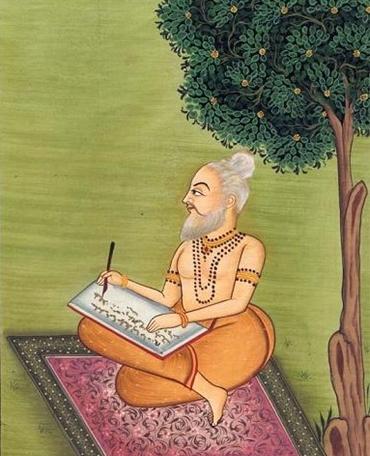 Maharshi Valmiki : Composer of Great Epic Ramayana |
Index
- Introduction
- Life of a Hunter
- Ratnakara became ‘Sage Valmiki’ by chanting sacred name of Rama - 'Ram Nam'
- Writing of the Great Epic 'Ramayana'
Introduction
The story of Sage Valmiki is meaningful. Sage Valmiki is a great example of how people are uplifted by the company of good men. By coming into contact with Narada, he became a great sage, a Brahmarshi; and he also gave the 'Ramayana' which the world can never forget. It is one of the great epics of the world. People of other countries read it in their own languages. The study of the 'Ramayana can reform our lives. We can never forget Sage Valmiki who gave this great epic to us. Let us offer our salutations to that great sage and bard.Sage Valmiki's 'Ramayana' is the very first such poem in Sanskrit. Therefore, it is also called the 'Adi-Kavya' or - the First Poem; Sage Valmiki is also known as the 'Adi-Kavi’, which means the First Poet.
The poet, who composed 'Ramayana' and taught the song and story to Lava and Kusha, was a great sage by name Sage Valmiki. How this man became a sage and a singer-poet is itself a very interesting story. Sage Valmiki's Ramayana is in the Sanskrit language. It is a very beautiful poem.
Sage Valmiki's 'Ramayana' can be sung. It is delightful to the ear like the sound of the cuckoo. Sage Valmiki has been described as a cuckoo on the tree of poetry, singing sweetly. Those who read the 'Ramayana' bow to the great Sage Valmiki first and then turn to the epic.
Life of a Hunter
Sage Valmiki’s real name was Ratnakara. The word 'Valmika' in Sanskrit means an ant-hill. Since he came out of an ant-hill, he got the name of Sage Valmiki. Let us see how did he come out of an ant-hill? Now, that is a wonderful and delightful story.Sage Valmiki also lived in the age of Sri Rama - called the 'Treta Yuga'. In those days, there was a thick forest all along the banks of the river Ganga. Many sages built their hermitage in that forest for their 'tapas'; among them was a sage by the name of Prachetasa. He had, a son called Ratnakara. When he was very young boy, one day he went into the forest. While playing he lost his way and began to cry. Just then a hunter came there looking for a prey. He saw the chubby boy and fondled and pacified him. The hunter had no children. He took the boy to his hut in the midst of the jungle.
Ratnakara's father searched for his son all around the hermitage, but could not find him. Finally he and his wife thought that the boy had become the prey of some wild beast. Both wept very much.
The hunter and his wife brought up the lad with great love. Ratnakara forgot his parents. He took the hunter for his father and the hunter's wife for his mother. He was taught how to hunt by the father. Ratnakara was a clever boy and learnt it quickly. He became a hunter with a sure aim.
To the birds and beasts of the forest, he became verily Yama, the God of Death. When he came of age, his foster father searched for a bride and celebrated his marriage with a beautiful girl from a hunter’s family. In a few years she gave birth to some children. Thus Ratnakara's family grew in size. It became very difficult for him to provide food and clothing to his large family. So he took to robbery. He began to attack people going from one village to another, frighten them and to away all that they had. If they opposed him, he killed them.
Ratnakara became ‘Sage Valmiki’ by chanting sacred name of Rama - 'Ram Nam'
One day Ratnakara was sitting by the side of a road waiting for a victim. It happened that the great sage Narada was passing that way. Narada had his favourite musical instrument, a Veena, in his hands. As he played on the Veena, he was singing a song in praise of God. When he was thus lost in joy, suddenly Ratnakara rushed at him. He lifted the stout staff in his hands and shouted, "Look here! Hand over all you have or else I'll break your head."But Narada was not an ordinary man. He was a divine sage. He was not frightened by the loud shouts of Ratnakara. He smilingly, "My dear man, all that I have only this old Veena and the rags I wear; If you want them, you can certainly take them. Why should you break my head for these?"
Ratnakara was astonished at these words. He looked up at Narada's face. There was neither fear nor anger; there was only peace. And how bright was that face! He was surprised to see a face tender and innocent like that of a child. He had never seen such a lovely face. As he gazed, his cruel mind melted into tenderness.
Narada sat beneath a tree and as played on the Veena, sang a song in praise of God. It was sweet like the song of cuckoo. Ratnakara was deeply moved. Noticing the change, the sage Narada paused in his song and said, "Brother, stealing is a sin. Killing animals is also sinful. Why do you do such evil?"
"Sire, what can I do Ratnakara replied, I have a large family. There are my old parents and my wife and children; they partake of my happiness and my troubles. I have to provide them with food and clothing. Hunting and stealing are all I know. What else can I do?"
The sage smiled and said, "My friend, will any member of your family partake of your sin also? Go and ask them, and bring back their reply."
Ratnakara thought that Narada was trying a trick to make his escape. Narada understood it and again said, "Well, child, if you do not trust me, you can tie me to this tree and then go."
Ratnakara thought that was all right. He tied Narada to a tree and went home.
On reaching home, he first went to his father and said, "Father, I rob people to get food and clothing for you all. It seems that is a sin. Do you not share in that sin? "His father was angry and said, "You sinner, you should not do such bad things. Am I to share your sins? No, never. You have to suffer for what you do."
Ratnakara went to his mother and said, "Surely, mother, you will share my sin, won't you?" But she also scolded him and sent him away. He then went to his wife and said, "Do you know how I earn to provide you and your children with food and clothing? It is by robbery. But I steal for your sake. Therefore you are also partners in my sin. Isn't that so?" The wife was displeased and said, 'What are you saying? What have we to do with your sin? You are my husband, and my children are your children. It is your duty to look after us and give us food and clothing."
Ratnakara's eyes were opened. He realized that he alone was responsible for all his sins no one else would share his sin. As soon as it was clear to him, he ran to Narada. He untied the sage and amidst weeping, narrated to him all that had happened in his home. Falling at Narada's feet he asked the sage, "Oh, sire now what of me? How can I atone for all the sins I have committed? You are my only savoir."
Narada lifted him up and wiped his tears. He consoled him saying, "Do not be afraid. I shall teach you a way to wash off your sins." So he taught Ratnakara the sacred name of Rama - 'Rama Nam'. He made him sit beneath a tree and asked him to go on repeating the sacred name of Rama. He said, I shall come here again, Till then you should not get up and go away." Then the sage departed.
At last one day the sage Narada again came that way. Very carefully he cleared that anthill still Ratnakara was wholly lost in his 'tapas' and did not wake up to the world around him. Narada chanted the name of Rama in his ears. Then he opened his eyes and saw the sage standing before him. He saluted him from where he was sitting. Narada helped him to get up. He also gently touched him all over. Ratnakara felt new life flowing through him. He touched the sage's feet; Narada lifted him up and embraced him. He said to him, "Ratnakara, you are blessed. God is pleased with your 'tapas'. You are now a sage of the highest order, a Brahmarshi. As you are now reborn from a Valmika (the ant-hill), will hereafter be famous as Sage Valmiki."
Writing of the Great Epic Ramayana
Sometime after Narada left, Sage Valmiki went to the river Ganga to bathe. A disciple by name Bharadwaja was with him carrying his clothes. On the way they came across the Tamasa Stream. The water in it was very clear. Sage Valmiki said to his disciple, "Look, how clear is this water, like the mind of a good man! I will bathe here today."Sage Valmiki was looking for a suitable place to step into the stream, when he heard the sweet chirping of birds. Looking up he saw two birds flying together. Sage Valmiki felt very pleased on seeing the happy bird couple.
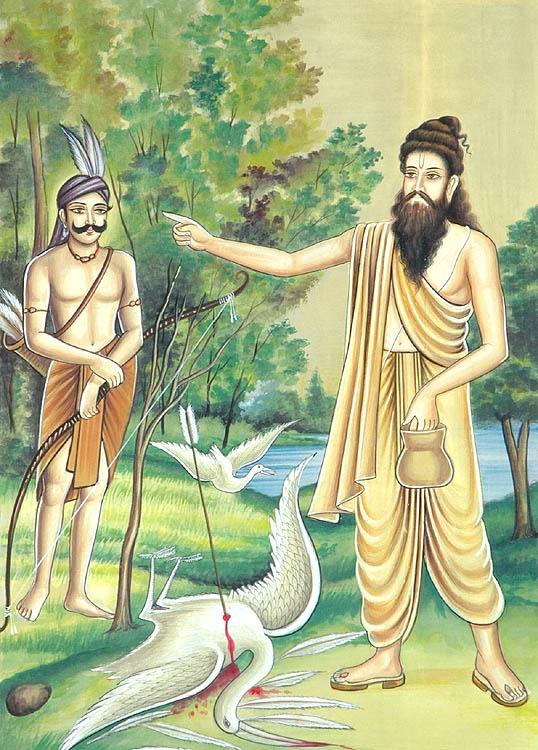 |
Just then one of the birds fell down hit by an arrow. It was the male bird. Seeing the wounded one, its mate was screaming in agony. Sage Valmiki's heart melted at this pitiful sight. He looked around to find out who had shot the bird. He saw a hunter with a bow and arrows, nearby. The hunter had shot the bird for food. Sage Valmiki was very angry. His lips opened and words came out: "You, who have killed one of a happy couple, may you not yourself live long!" A shloka was born out of his sorrow.
‘mAnishAda pratishTAtum samagah ssAshvatIssamAh
yat krouncha mithunAdEkam sokam avadhIm kAma mOhitam’
Meaning: You will find no rest for the long years of Eternity. For you killed a bird in love and unsuspectingyat krouncha mithunAdEkam sokam avadhIm kAma mOhitam’
The sad plight of the birds had moved Sage Valmiki to curse the hunter, but yet he felt very unhappy, because he had cursed him. He expressed his sorrow to Bharadwaja who was with him. He was equally surprised that a shloka should have come from his lips. As he walked back to his ashram and also later, he thought only of the shloka.
While Sage Valmiki's mind dwelt so intensely on the shloka that had sprung from his lips, Brahma, the Lord of Creation, appeared before him. He said to Sage Valmiki, "O great sage, the shloka which came from your lips was inspired by me. Now you will write the 'Ramayana' in the form of Shlokas. Narada has narrated to you the story of the 'Ramayana'. You will see with your own eyes all that happened. Whatever you say will be true. Your words shall be truth. As long as there are rivers and mountains in the world, people will read the 'Ramayana'." So Lord Brahma blessed him and disappeared.
Sage Valmiki wrote the 'Ramayana'. He taught the Shlokas first to the sons of Sri Rama, Lava and Kusha. They were born twins in Sage Valmiki's ashram and grew up there.
Great Indian Hindu Sages who revolutionised the field of Science
Nija Vaishakh Krushna Panchami, Kaliyug Varsha 5112
Our illustrious past in the field of Science before the invasions of Islamic & Portuguese hordes is worth noting. This should give inspiration to our young generation who will then realise what great scientists were produced in the golden era of India.
Born in 476 CE in Kusumpur ( Bihar ), Aryabhatt's intellectual brilliance remapped the boundaries of mathematics and astronomy. In 499 CE, at the age of 23, he wrote a text on astronomy and an unparallel treatise on mathematics called "Aryabhatiyam." He formulated the process of calculating the motion of planets and the time of eclipses. Aryabhatt was the first to proclaim that the earth is round, it rotates on its axis, orbits the sun and is suspended in space - 1000 years before Copernicus published his heliocentric theory. He is also acknowledged for calculating p (Pi) to four decimal places: 3.1416 and the sine table in trigonometry. Centuries later, in 825 CE, the Arab mathematician, Mohammed Ibna Musa credited the value of Pi to the Indians, "This value has been given by the Hindus." And above all, his most spectacular contribution was the concept of zero without which modern computer technology would have been non-existent. Aryabhatt was a colossus in the field of mathematics.
Born in the obscure village of Vijjadit (Jalgaon) in Maharastra, Bhaskaracharya' s work in Algebra, Arithmetic and Geometry catapulted him to fame and immortality. His renowned mathematical works called "Lilavati" and "Bijaganita" are considered to be unparalled and a memorial to his profound intelligence. Its translation in several languages of the world bear testimony to its eminence. In his treatise " Siddhant Shiromani " he writes on planetary positions, eclipses, cosmography, mathematical techniques and astronomical equipment. In the " Surya Siddhant " he makes a note on the force of gravity: "Objects fall on earth due to a force of attraction by the earth. Therefore, the earth, planets, constellations, moon, and sun are held in orbit due to this attraction." Bhaskaracharya was the first to discover gravity, 500 years before Sir Isaac Newton . He was the champion among mathematicians of ancient and medieval India . His works fired the imagination of Persian and European scholars, who through research on his works earned fame and popularity.
As the founder of " Vaisheshik Darshan "- one of six principal philosophies of India - Acharya Kanad was a genius in philosophy. He is believed to have been born in Prabhas Kshetra near Dwarika in Gujarat . He was the pioneer expounder of realism, law of causation and the atomic theory. He has classified all the objects of creation into nine elements, namely: earth, water, light, wind, ether, time, space, mind and soul. He says, "Every object of creation is made of atoms which in turn connect with each other to form molecules." His statement ushered in the Atomic Theory for the first time ever in the world, nearly 2500 years before John Dalton . Kanad has also described the dimension and motion of atoms and their chemical reactions with each other. The eminent historian, T.N. Colebrook , has said, "Compared to the scientists of Europe , Kanad and other Indian scientists were the global masters of this field."
He was an extraordinary wizard of science born in the nondescript village of Baluka in Madhya Pradesh . His dedicated research for twelve years produced maiden discoveries and inventions in the faculties of chemistry and metallurgy. Textual masterpieces like " Ras Ratnakar ," "Rashrudaya" and "Rasendramangal" are his renowned contributions to the science of chemistry. Where the medieval alchemists of England failed, Nagarjuna had discovered the alchemy of transmuting base metals into gold. As the author of medical books like "Arogyamanjari" and "Yogasar," he also made significant contributions to the field of curative medicine. Because of his profound scholarliness and versatile knowledge, he was appointed as Chancellor of the famous University of Nalanda . Nagarjuna's milestone discoveries impress and astonish the scientists of today.
A genius who has been glowingly recognized in the annals of medical science. Born to sage Vishwamitra, Acharya Sudhrut details the first ever surgery procedures in " Sushrut Samhita ," a unique encyclopedia of surgery. He is venerated as the father of plastic surgery and the science of anesthesia. When surgery was in its infancy in Europe , Sushrut was performing Rhinoplasty (restoration of a damaged nose) and other challenging operations. In the " Sushrut Samhita ," he prescribes treatment for twelve types of fractures and six types of dislocations. His details on human embryology are simply amazing. Sushrut used 125 types of surgical instruments including scalpels, lancets, needles, Cathers and rectal speculums; mostly designed from the jaws of animals and birds. He has also described a number of stitching methods; the use of horse's hair as thread and fibers of bark. In the " Sushrut Samhita ," and fibers of bark. In the " Sushrut Samhita ," he details 300 types of operations. The ancient Indians were the pioneers in amputation, caesarian and cranial surgeries. Acharya Sushrut was a giant in the arena of medical science.
renowned astrologer and astronomer who was honored with a special decoration and status as one of the nine gems in the court of King Vikramaditya in Avanti ( Ujjain ). Varahamihir' s book "panchsiddhant" holds a prominent place in the realm of astronomy. He notes that the moon and planets are lustrous not because of their own light but due to sunlight. In the " Bruhad Samhita " and " Bruhad Jatak ," he has revealed his discoveries in the domains of geography, constellation, science, botany and animal science. In his treatise on botanical science, Varamihir presents cures for various diseases afflicting plants and trees. The rishi-scientist survives through his unique contributions to the science of astrology and astronomy.
The Science of Yoga is one of several unique contributions of India to the world. It seeks to discover and realize the ultimate Reality through yogic practices. Acharya Patanjali , the founder, hailed from the district of Gonda (Ganara) in Uttar Pradesh . He prescribed the control of prana (life breath) as the means to control the body, mind and soul. This subsequently rewards one with good health and inner happiness. Acharya Patanjali 's 84 yogic postures effectively enhance the efficiency of the respiratory, circulatory, nervous, digestive and endocrine systems and many other organs of the body. Yoga has eight limbs where Acharya Patanjali shows the attainment of the ultimate bliss of God in samadhi through the disciplines of: yam, niyam, asan, pranayam, pratyahar, dhyan and dharna. The Science of Yoga has gained popularity because of its scientific approach and benefits. Yoga also holds the honored place as one of six philosophies in the Indian philosophical system. Acharya Patanjali will forever be remembered and revered as a pioneer in the science of self-discipline, happiness and self-realization.
Acharya Bharadwaj had a hermitage in the holy city of Prayag and was an ordent apostle of Ayurveda and mechanical sciences. He authored the " Yantra Sarvasva " which includes astonishing and outstanding discoveries in aviation science, space science and flying machines. He has described three categories of flying machines: 1.) One that flies on earth from one place to another. 2.) One that travels from one planet to another. 3.) And One that travels from one universe to another. His designs and descriptions have impressed and amazed aviation engineers of today. His brilliance in aviation technology is further reflected through techniques described by him:
1.) Profound Secret: The technique to make a flying machine invisible through the application of sunlight and wind force.
2.) Living Secret: The technique to make an invisible space machine visible through the application of electrical force.
3.) Secret of Eavesdropping: The technique to listen to a conversation in another plane.
4.) Visual Secrets: The technique to see what's happening inside another plane.
Through his innovative and brilliant discoveries, Acharya Bharadwaj has been recognized as the pioneer of aviation technology.
Celebrated as the founder of Sankhya philosophy, Acharya Kapil is believed to have been born in 3000 BCE to the illustrious sage Kardam and Devhuti. He gifted the world with the Sankhya School of Thought. His pioneering work threw light on the nature and principles of the ultimate Soul (Purusha), primal matter (Prakruti) and creation. His concept of transformation of energy and profound commentaries on atma, non-atma and the subtle elements of the cosmos places him in an elite class of master achievers - incomparable to the discoveries of other cosmologists. On his assertion that Prakruti, with the inspiration of Purusha, is the mother of cosmic creation and all energies, he contributed a new chapter in the science of cosmology. Because of his extrasensory observations and revelations on the secrets of creation, he is recognized and saluted as the Father of Cosmology.
Our illustrious past in the field of Science before the invasions of Islamic & Portuguese hordes is worth noting. This should give inspiration to our young generation who will then realise what great scientists were produced in the golden era of India.
Aryabhatt (476 CE) - Master Astronomer and Mathematician
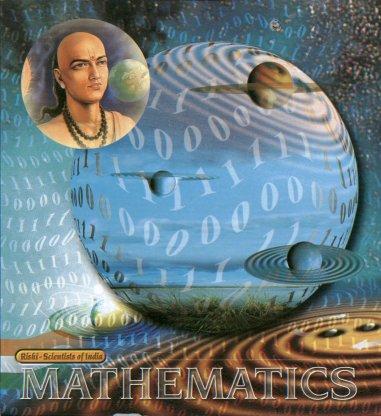 |
Born in 476 CE in Kusumpur ( Bihar ), Aryabhatt's intellectual brilliance remapped the boundaries of mathematics and astronomy. In 499 CE, at the age of 23, he wrote a text on astronomy and an unparallel treatise on mathematics called "Aryabhatiyam." He formulated the process of calculating the motion of planets and the time of eclipses. Aryabhatt was the first to proclaim that the earth is round, it rotates on its axis, orbits the sun and is suspended in space - 1000 years before Copernicus published his heliocentric theory. He is also acknowledged for calculating p (Pi) to four decimal places: 3.1416 and the sine table in trigonometry. Centuries later, in 825 CE, the Arab mathematician, Mohammed Ibna Musa credited the value of Pi to the Indians, "This value has been given by the Hindus." And above all, his most spectacular contribution was the concept of zero without which modern computer technology would have been non-existent. Aryabhatt was a colossus in the field of mathematics.
Bhaskaracharya || (1114-1183 CE) - Genius in Algebra
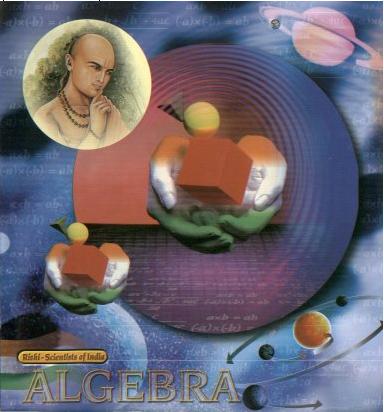 |
Born in the obscure village of Vijjadit (Jalgaon) in Maharastra, Bhaskaracharya' s work in Algebra, Arithmetic and Geometry catapulted him to fame and immortality. His renowned mathematical works called "Lilavati" and "Bijaganita" are considered to be unparalled and a memorial to his profound intelligence. Its translation in several languages of the world bear testimony to its eminence. In his treatise " Siddhant Shiromani " he writes on planetary positions, eclipses, cosmography, mathematical techniques and astronomical equipment. In the " Surya Siddhant " he makes a note on the force of gravity: "Objects fall on earth due to a force of attraction by the earth. Therefore, the earth, planets, constellations, moon, and sun are held in orbit due to this attraction." Bhaskaracharya was the first to discover gravity, 500 years before Sir Isaac Newton . He was the champion among mathematicians of ancient and medieval India . His works fired the imagination of Persian and European scholars, who through research on his works earned fame and popularity.
Acharya Kanad (600 BCE) - Founder of Atomic Theory
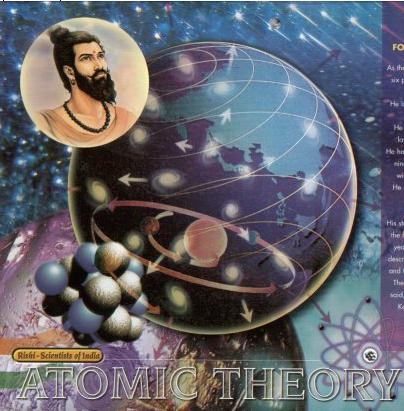 |
As the founder of " Vaisheshik Darshan "- one of six principal philosophies of India - Acharya Kanad was a genius in philosophy. He is believed to have been born in Prabhas Kshetra near Dwarika in Gujarat . He was the pioneer expounder of realism, law of causation and the atomic theory. He has classified all the objects of creation into nine elements, namely: earth, water, light, wind, ether, time, space, mind and soul. He says, "Every object of creation is made of atoms which in turn connect with each other to form molecules." His statement ushered in the Atomic Theory for the first time ever in the world, nearly 2500 years before John Dalton . Kanad has also described the dimension and motion of atoms and their chemical reactions with each other. The eminent historian, T.N. Colebrook , has said, "Compared to the scientists of Europe , Kanad and other Indian scientists were the global masters of this field."
Nagarjuna (100 CE) - Wizard of Chemical Science
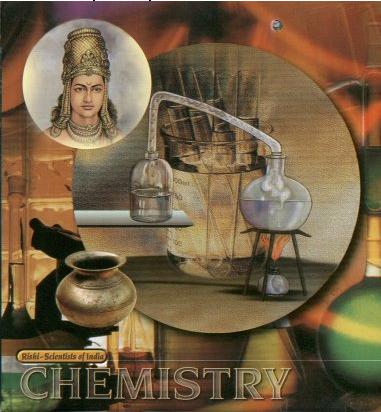 |
He was an extraordinary wizard of science born in the nondescript village of Baluka in Madhya Pradesh . His dedicated research for twelve years produced maiden discoveries and inventions in the faculties of chemistry and metallurgy. Textual masterpieces like " Ras Ratnakar ," "Rashrudaya" and "Rasendramangal" are his renowned contributions to the science of chemistry. Where the medieval alchemists of England failed, Nagarjuna had discovered the alchemy of transmuting base metals into gold. As the author of medical books like "Arogyamanjari" and "Yogasar," he also made significant contributions to the field of curative medicine. Because of his profound scholarliness and versatile knowledge, he was appointed as Chancellor of the famous University of Nalanda . Nagarjuna's milestone discoveries impress and astonish the scientists of today.
Acharya Charak (600 BCE) - Father of Medicine
Acharya Charak has been crowned as the Father of Medicine. His renowned work, the " Charak Samhita ", is considered as an encyclopedia of Ayurveda. His principles, diagoneses, and cures retain their potency and truth even after a couple of millennia. When the science of anatomy was confused with different theories in Europe , Acharya Charak revealed through his innate genius and enquiries the facts on human anatomy, embryology, pharmacology, blood circulation and diseases like diabetes, tuberculosis, heart disease, etc. In the " Charak Samhita " he has described the medicinal qualities and functions of 100,000 herbal plants. He has emphasized the influence of diet and activity on mind and body. He has proved the correlation of spirituality and physical health contributed greatly to diagnostic and curative sciences. He has also prescribed and ethical charter for medical practitioners two centuries prior to the Hippocratic oath. Through his genius and intuition, Acharya Charak made landmark contributions to Ayurvedal. He forever remains etched in the annals of history as one of the greatest and noblest of rishi-scientists.Acharya Sushrut (600 BCE) - Father of Plastic Surgery
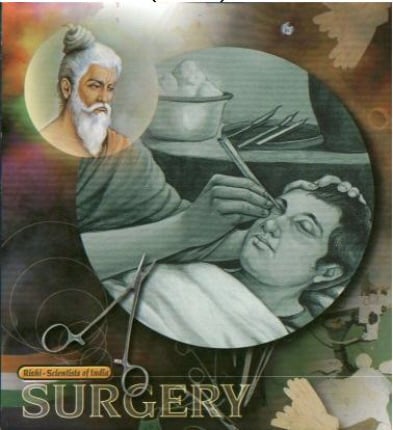 |
A genius who has been glowingly recognized in the annals of medical science. Born to sage Vishwamitra, Acharya Sudhrut details the first ever surgery procedures in " Sushrut Samhita ," a unique encyclopedia of surgery. He is venerated as the father of plastic surgery and the science of anesthesia. When surgery was in its infancy in Europe , Sushrut was performing Rhinoplasty (restoration of a damaged nose) and other challenging operations. In the " Sushrut Samhita ," he prescribes treatment for twelve types of fractures and six types of dislocations. His details on human embryology are simply amazing. Sushrut used 125 types of surgical instruments including scalpels, lancets, needles, Cathers and rectal speculums; mostly designed from the jaws of animals and birds. He has also described a number of stitching methods; the use of horse's hair as thread and fibers of bark. In the " Sushrut Samhita ," and fibers of bark. In the " Sushrut Samhita ," he details 300 types of operations. The ancient Indians were the pioneers in amputation, caesarian and cranial surgeries. Acharya Sushrut was a giant in the arena of medical science.
Varahmihir (499-587 CE) - Eminent Astrologer and Astronomera
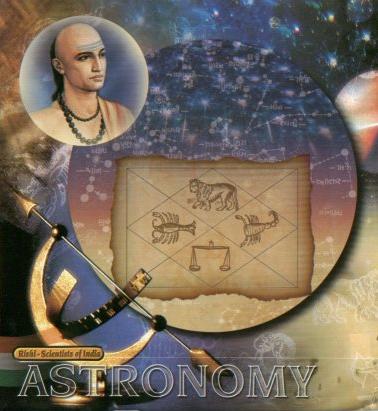 |
renowned astrologer and astronomer who was honored with a special decoration and status as one of the nine gems in the court of King Vikramaditya in Avanti ( Ujjain ). Varahamihir' s book "panchsiddhant" holds a prominent place in the realm of astronomy. He notes that the moon and planets are lustrous not because of their own light but due to sunlight. In the " Bruhad Samhita " and " Bruhad Jatak ," he has revealed his discoveries in the domains of geography, constellation, science, botany and animal science. In his treatise on botanical science, Varamihir presents cures for various diseases afflicting plants and trees. The rishi-scientist survives through his unique contributions to the science of astrology and astronomy.
Acharya Patanjali (200 BCE) - Father of Yoga
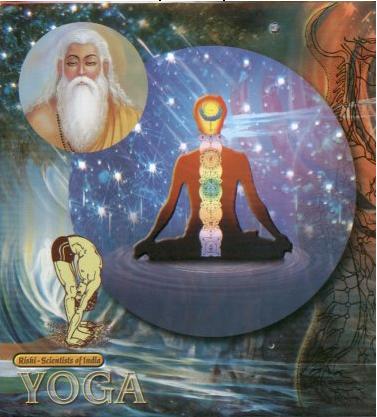 |
The Science of Yoga is one of several unique contributions of India to the world. It seeks to discover and realize the ultimate Reality through yogic practices. Acharya Patanjali , the founder, hailed from the district of Gonda (Ganara) in Uttar Pradesh . He prescribed the control of prana (life breath) as the means to control the body, mind and soul. This subsequently rewards one with good health and inner happiness. Acharya Patanjali 's 84 yogic postures effectively enhance the efficiency of the respiratory, circulatory, nervous, digestive and endocrine systems and many other organs of the body. Yoga has eight limbs where Acharya Patanjali shows the attainment of the ultimate bliss of God in samadhi through the disciplines of: yam, niyam, asan, pranayam, pratyahar, dhyan and dharna. The Science of Yoga has gained popularity because of its scientific approach and benefits. Yoga also holds the honored place as one of six philosophies in the Indian philosophical system. Acharya Patanjali will forever be remembered and revered as a pioneer in the science of self-discipline, happiness and self-realization.
Acharya Bharadwaj (800 BCE) - Pioneer of Aviation Technology
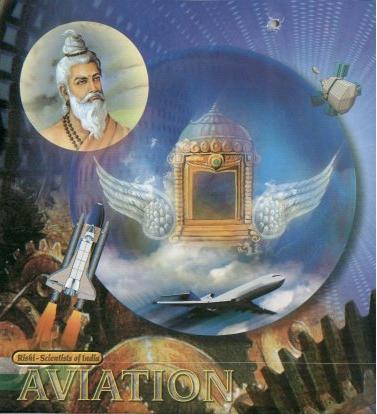 |
Acharya Bharadwaj had a hermitage in the holy city of Prayag and was an ordent apostle of Ayurveda and mechanical sciences. He authored the " Yantra Sarvasva " which includes astonishing and outstanding discoveries in aviation science, space science and flying machines. He has described three categories of flying machines: 1.) One that flies on earth from one place to another. 2.) One that travels from one planet to another. 3.) And One that travels from one universe to another. His designs and descriptions have impressed and amazed aviation engineers of today. His brilliance in aviation technology is further reflected through techniques described by him:
1.) Profound Secret: The technique to make a flying machine invisible through the application of sunlight and wind force.
2.) Living Secret: The technique to make an invisible space machine visible through the application of electrical force.
3.) Secret of Eavesdropping: The technique to listen to a conversation in another plane.
4.) Visual Secrets: The technique to see what's happening inside another plane.
Through his innovative and brilliant discoveries, Acharya Bharadwaj has been recognized as the pioneer of aviation technology.
Acharya Kapil (3000 BCE) - Father of Cosmology
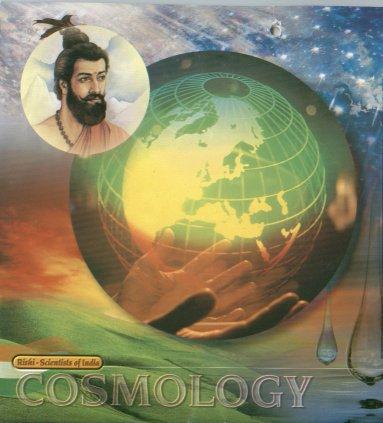 |
Celebrated as the founder of Sankhya philosophy, Acharya Kapil is believed to have been born in 3000 BCE to the illustrious sage Kardam and Devhuti. He gifted the world with the Sankhya School of Thought. His pioneering work threw light on the nature and principles of the ultimate Soul (Purusha), primal matter (Prakruti) and creation. His concept of transformation of energy and profound commentaries on atma, non-atma and the subtle elements of the cosmos places him in an elite class of master achievers - incomparable to the discoveries of other cosmologists. On his assertion that Prakruti, with the inspiration of Purusha, is the mother of cosmic creation and all energies, he contributed a new chapter in the science of cosmology. Because of his extrasensory observations and revelations on the secrets of creation, he is recognized and saluted as the Father of Cosmology.
Lord Parshuram
अग्रत: चतुरो वेदा: पृष्ठत: सशरं धनु: ।
इदं ब्राह्मं इदं क्षात्रं शापादपि शरादपि ।।
इदं ब्राह्मं इदं क्षात्रं शापादपि शरादपि ।।
Meaning: Parshuram who is well-versed with the four Vedas and sports the bow and arrow upon His back (that is the one who has the radiance of both the Brahman and the Kshatriya) will destroy evildoers either with a curse or with an arrow.
When fighting, mere use of weapons is insufficient for a seeker. He should have the potential to curse in conjunction with the former. Shri Parshuram single-handedly eliminated the warriors from the earth, circumambulating it twenty-one times. What exactly does this mean? He destroyed the evil Kshatriyas. If He were to destroy all the Kshatriyas on the earth thoroughly even once then not a single Kshatriya would have survived for the second round! However He slew only the evil Kshatriyas. Let us all attempt to destroy the evildoers atleast once.
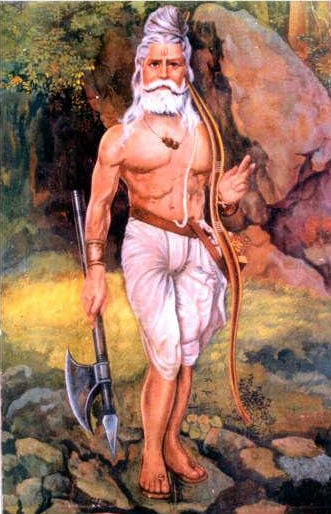 Shri Parshuram |
He killed the entire army and King Kartavirya Sahasrarjuna, who took away the magical cow (Kamadhenu) forcibly, that belonged to His father Jamadagni. In revenge the King's sons killed Jamadagni in Parshuram's absence. Furious at their unrighteous act, He killed all sons of the King and also went on killing all corrupt Haihaya Kings and warriors on the earth 21 times.
He then conducted the Ashvamedha sacrifice, done only by sovereign Kings and gave the entire land He owned to priests who performed the sacrifice (Yadnya).
He is a Chiranjeevi (Immortal) who fought the advancing ocean back, thus saving the lands of Konkan and Malabar (Maharashtra - Karnataka - Kerala coastline). The coastal area of Kerala state along with the Konkan region, i.e., coastal Maharashtra and Karnataka, is known as ParshuramKshetra (area).
He has been a Guru to Bhishma, Dronacharya and later also to Karna. He taught Karna the extremely powerful Brahmastra (a celestial weapon). But He also cursed that the knowledge would be useless to Karna, predicting much in advance that Karna will join the unrighteous Duryodhana in the Kurukshetra war. Such was His love for Righteousness.
Also, the Sudarshan chakra (or Sudarshan Vidya) is said to be given by Parshuram to Lord Krushna. The purpose of the sixth Incarnation of Vishnu is considered by religious scholars to be to relieve the earth's burden by exterminating the sinful, destructive and irreligious kings that pillaged its resources, and neglected their duties.
Parshuram is a martial Shraman ascetic. However, unlike all other Incarnations, Parshuram lives on earth even today. The Kalki Purana states Parshuram will be the martial guru of Sri Kalki, the 10th and final Incarnation of Lord Vishnu. It is He who instructs Kalki to perform a long penance unto Shiva to receive celestial weaponry.
He created a temple of worship right after He resurfaced Kerala from the sea. He placed statues of various Deities in 108 different places and introduced martial arts to protect the temple from the evil.
கருத்துகள் இல்லை:
கருத்துரையிடுக